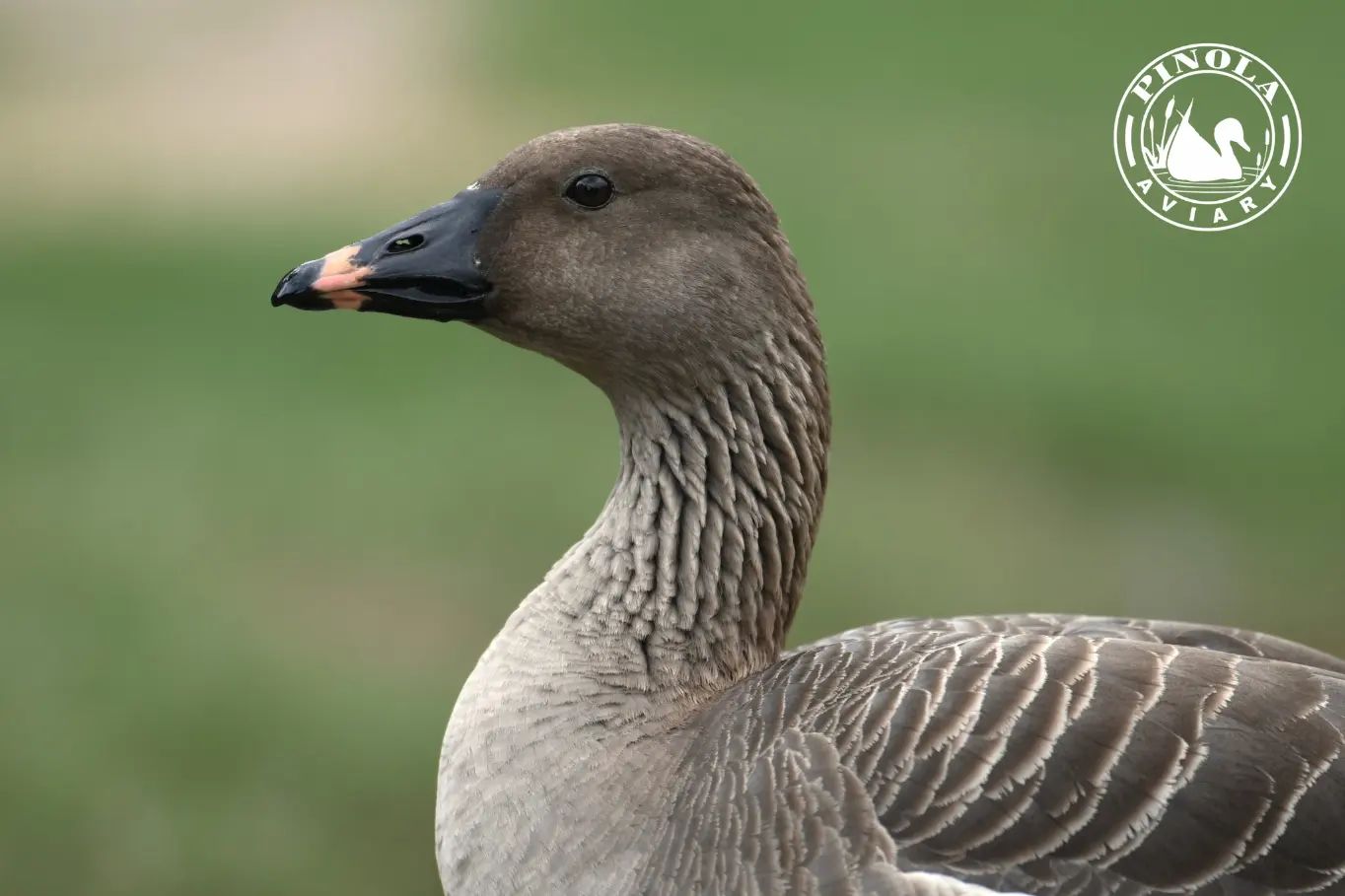- Overview of the Tundra Bean Goose 𝘈𝘯𝘴𝘦𝘳 𝘴𝘦𝘳𝘳𝘪𝘳𝘰𝘴𝘵𝘳𝘪𝘴 species, including its physical characteristics and taxonomy
- Habitats and migration patterns of the Tundra Bean Goose with an emphasis on environmental impacts
- Behavioral ecology of the Tundra Bean Goose and its adaptation strategies
- Conservation status and efforts related to the Tundra Bean Goose to prevent population decline
- Role of zoos and wildlife preserves in the research and conservation of the Tundra Bean Goose
The Tundra Bean Goose 𝘈𝘯𝘴𝘦𝘳 𝘴𝘦𝘳𝘳𝘪𝘳𝘰𝘴𝘵𝘳𝘪𝘴 is a migratory bird with distinctive brown and gray plumage. It is aptly named for its preference for tundra habitats and diet, including beans and other vegetation. Categorized under the family Anatidae, these geese are part of the larger bird order Anseriformes, which also includes swans and ducks.
These geese exhibit a compelling blend of strength and resilience. The bill is typically an orangish color hued with black at the base, setting them apart from similar species. Adult Tundra Bean Geese have a wing span of approximately 53 to 61 inches. These geese possess robust bodies that enable them to traverse vast distances during migrations, an intrinsic part of their life cycle.
The Tundra Bean Goose’s habitats comprise the Arctic tundra regions, which are characterized by freezing temperatures and limited vegetation. During breeding, they migrate northward to take advantage of the brief Arctic summer, nesting in areas such as the Siberian tundra. In contrast, winter drives these birds to seek milder climates across Europe and East Asia.
Migration is a significant part of the Tundra Bean Goose’s life and offers a spectacular display of nature’s rhythms. Their journey is critical for accessing nutrients unavailable in their wintering grounds. These geese rely on a series of stopover sites to rest and feed, which are vital for their survival and species conservation.
Regarding behavioral ecology, the Tundra Bean Goose engages in fascinating cooperative behaviors. They are known for their elaborate vocal communications, critical in maintaining group cohesion during migration and warning of potential threats. In the Arctic tundra, they nest in colonies, protecting predators. Social hierarchy within flocks dictates feeding and mating behaviors, where dominant individuals secure the best resources.
Moreover, these geese have shown incredible adaptive skills. They modify their diet based on availability, consuming various aquatic plants, roots, and grains, reflecting their omnivorous nature. Their webbed feet are not just for swimming; they also provide stability on the icy ground. During the cold months, metabolic adjustments in Tundra Bean Geese help them conserve energy until food becomes abundant again.
However, the Tundra Bean Goose faces conservation issues that threaten its future, including habitat destruction, climate change, and hunting pressures. These factors have led to classifying some populations as vulnerable or endangered, prompting international conservation initiatives to monitor and protect this species.
Conservation tools include habitat protection, regulating hunting, and fostering international agreements that secure migratory stopovers. Scientific research often focuses on understanding the geese’s breeding habits, migratory routes, and the environmental factors that may alter their patterns.
Zoos and wildlife preserves have become crucial allies in studying and preserving Tundra Bean goose populations. These institutions provide safe environments where individuals can breed without facing natural predators or migration challenges. Furthermore, they serve as hubs for public education, teaching visitors about the geese’s life cycle and the significance of conservation efforts.
In-depth studies and breeding programs in these controlled settings have yielded valuable insights into the Tundra Bean Goose’s requirements for successful reproduction and chick rearing. This knowledge can then be applied to enhance wild populations’ chances of survival, making zoos and preserves important players in the global conservation scene.
As part of biodiversity, the Tundra Bean Goose plays an integral role in wetland ecosystems, acting as seed dispersers and contributing to the ecological balance. Protecting these geese is to maintain the health and function of these environments, which are also home to many other species.
With the combined efforts of wildlife biologists, conservationists, and informed public support, our understanding and preservation of the Tundra Bean Goose 𝘈𝘯𝘴𝘦𝘳 𝘴𝘦𝘳𝘳𝘪𝘳𝘰𝘴𝘵𝘳𝘪𝘴 advance, ensuring a place for them in the skies and in the rich tapestry of Earth’s biodiversity. The sustainable future of these geese is inextricably linked to the health of the planet and the conscientious actions we take as stewards of the natural world.
*****
Source Description
Tundra Bean Goose 𝘈𝘯𝘴𝘦𝘳 𝘴𝘦𝘳𝘳𝘪𝘳𝘰𝘴𝘵𝘳𝘪𝘴


